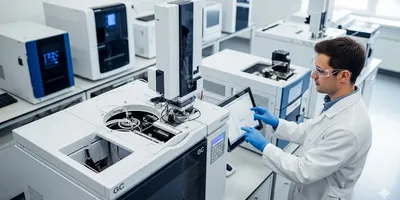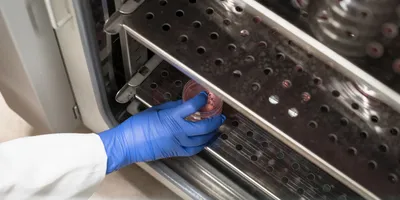The petrochemical industry is the engine of the modern world, converting crude oil and natural gas into an astonishing array of products—from the fuels that power our vehicles to the plastics, synthetic fibers, and solvents that define our daily lives. At every stage of this complex supply chain, from the raw material to the final product, the integrity and composition of these substances are paramount. For laboratory professionals, this places a constant, critical demand on analytical chemistry. Petrochemical analysis is not merely a procedural step; it is the cornerstone of quality control, a guarantor of safety, and the foundation of environmental compliance.
The stakes are exceptionally high. Impurities in a fuel can damage an engine, a flawed solvent can compromise a manufacturing process, and a batch of polymers that fails to meet specifications can result in significant financial loss. This article provides an in-depth look at the methodologies that underpin robust petrochemical analysis, exploring the essential techniques used to ensure the purity and quality of these vital compounds. We will delve into the analytical challenges and the instrumental solutions that allow laboratories to maintain the high standards required by this indispensable global industry.
The Pillars of Petrochemical Quality Control
Petrochemical analysis is a multi-faceted discipline, drawing on a suite of analytical techniques to answer fundamental questions about a sample's composition. These tests are performed at various points, including:
- Upstream: Characterizing crude oil from a well, evaluating its properties for refining.
- Midstream: Monitoring intermediate products and streams within the refinery to optimize processes.
- Downstream: Certifying the purity of final products (e.g., gasoline, jet fuel, plastics) before they enter the market.
The core objective is to identify and quantify components, including desirable products, impurities, and contaminants. This requires a combination of separation and identification techniques, often working in tandem.
Common Parameters in Petrochemical Analysis:
- Purity: Percentage of the main component in a mixture.
- Composition: A detailed breakdown of all components present.
- Physical Properties: Such as boiling point, density, viscosity, and flash point.
- Trace Impurities: The presence of sulfur, nitrogen, metals, or water at very low concentrations.
- Additives: The concentration of performance-enhancing chemicals.
Key Analytical Techniques for Petrochemical Testing
The precision and reliability of petrochemical analysis rely on a number of key instrumental methods. Each technique serves a specific purpose, contributing a piece to the overall picture of a sample's chemical identity.
Gas Chromatography (GC)
Gas Chromatography is arguably the most fundamental and widely used technique in petrochemicals. It excels at separating complex mixtures of volatile or semi-volatile organic compounds. By passing a vaporized sample through a long, coiled column, GC separates components based on their boiling points and chemical interactions with the column's stationary phase.
Key GC Applications:
- Simulated Distillation (SIMDIS): A GC method that simulates the boiling range of crude oil or other hydrocarbon mixtures, providing crucial information for refinery operations.
- Natural Gas Analysis: Quantifying the composition of natural gas, including methane, ethane, and other hydrocarbons.
- Purity Testing: Determining the purity of solvents like benzene or toluene by separating and quantifying impurities.
Mass Spectrometry (MS)
Mass Spectrometry is often coupled with GC (GC-MS) to provide definitive identification. The mass spectrometer ionizes and fragments the separated compounds, generating a unique mass spectrum for each molecule. This "fingerprint" allows for unambiguous identification, even for components present at trace levels.
Advanced Lab Management Certificate
The Advanced Lab Management certificate is more than training—it’s a professional advantage.
Gain critical skills and IACET-approved CEUs that make a measurable difference.
Applications of MS in Petrochemical Labs:
- Identifying Unknowns: Pinpointing contaminants or unexpected byproducts in a process stream.
- Trace Contaminant Analysis: Detecting and quantifying trace levels of sulfur compounds, mercury, or other harmful elements that could poison catalysts or degrade products.
- Hydrocarbon Profiling: Providing a detailed molecular breakdown of complex mixtures, crucial for optimizing refining processes.
Spectroscopy and Elemental Analysis
While chromatography separates, spectroscopy identifies and quantifies the elemental or molecular composition of a sample.
- Infrared (IR) Spectroscopy: Used to identify the functional groups present in a sample. It is a rapid method for quality control of polymers, lubricants, and other finished products.
- Atomic Absorption Spectroscopy (AAS) & Inductively Coupled Plasma-Optical Emission Spectroscopy (ICP-OES): These techniques are used to analyze the elemental composition of samples. They are critical for detecting trace metals in fuels, which can cause engine damage or act as catalyst poisons in the refining process.
- X-ray Fluorescence (XRF): A non-destructive, rapid-screening technique used to determine the elemental composition of materials. It is often used for sulfur analysis in fuels, which is a key regulatory parameter.
Ensuring Compliance and Safety in Petrochemical Production
Beyond simple quality control, petrochemical analysis is a linchpin of regulatory compliance and environmental safety. Government agencies worldwide impose strict limits on key parameters to protect public health and the environment.
Sulfur Content Analysis
Sulfur is a natural component of crude oil and must be removed during refining. High sulfur content in fuels leads to acid rain and particulate matter emissions. Modern regulations, such as those governing ultra-low sulfur diesel (ULSD), require sulfur content to be measured in parts per million (ppm).
XRF and GC-SCD (Sulfur Chemiluminescence Detector): These instruments are the workhorses for ultra-low sulfur analysis, providing the precision needed to meet regulatory limits.
Water and Sediment Analysis
The presence of water and sediment in crude oil or fuels can lead to corrosion, microbial growth, and operational problems. Techniques like Karl Fischer titration are used to precisely measure water content, while centrifuge methods are used for sediment analysis.
Additive and Impurity Profiling
Performance additives are blended into fuels to improve properties like octane rating or deter engine deposits. It is crucial to ensure these additives are present at the correct concentration. Conversely, the presence of certain impurities (like benzene in gasoline) is strictly regulated due to health and safety concerns. Petrochemical analysis provides the data to verify that both are within specified limits.
The Future of Petrochemical Analysis
The field of petrochemical analysis is continually evolving, driven by the need for faster, more sensitive, and more automated methods. The industry is moving towards:
- Increased Automation: Lab automation systems and robotics are streamlining sample preparation and analysis, increasing throughput and reproducibility.
- Advanced Hyphenated Techniques: The combination of powerful analytical tools, such as GCxGC (Comprehensive Two-Dimensional Gas Chromatography), offers unprecedented separation power for the most complex mixtures, revealing components that were previously undetectable.
- Digitalization and Data Analytics: Advanced software platforms are being used to manage, process, and interpret the massive volumes of data generated by modern instruments. This allows for real-time monitoring and predictive quality control.
The ongoing advancements in analytical chemistry are not just improving efficiency; they are enabling a new level of precision in petrochemical analysis, ensuring that the industry can meet future demands for higher quality products and more stringent environmental standards.
FAQ
What are the main goals of petrochemical analysis?
The main goals are to ensure product quality and purity, optimize refining processes, guarantee compliance with safety and environmental regulations, and ultimately, protect both consumers and the environment.
Why is chromatography so widely used in this field?
Chromatography is essential because petrochemicals are complex mixtures of hundreds of different hydrocarbons. Chromatography provides the necessary separation power to isolate each component, allowing for its individual identification and quantification.
How is environmental compliance verified through analysis?
Compliance is verified by testing for regulated substances, such as sulfur, nitrogen, and heavy metals. Laboratories use highly sensitive instruments to ensure that the levels of these substances in fuels and other products are below the maximum limits set by government and international standards.
What is the difference between compositional and property testing?
Compositional testing (e.g., GC-MS) determines the specific chemical makeup of a sample. Property testing (e.g., flash point or viscosity) measures a physical characteristic that affects a product's performance or safety. Both are critical for a complete quality assessment.











